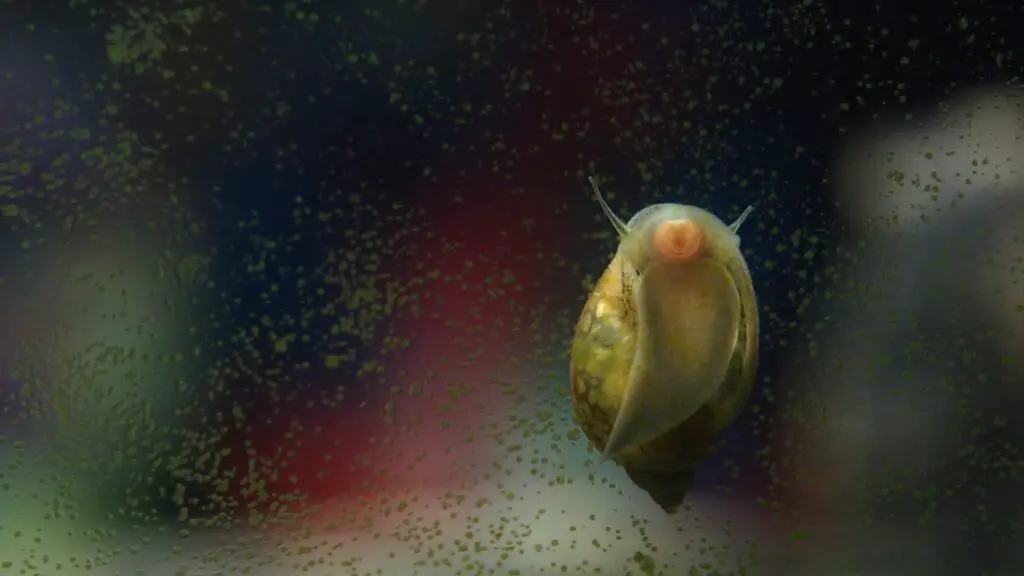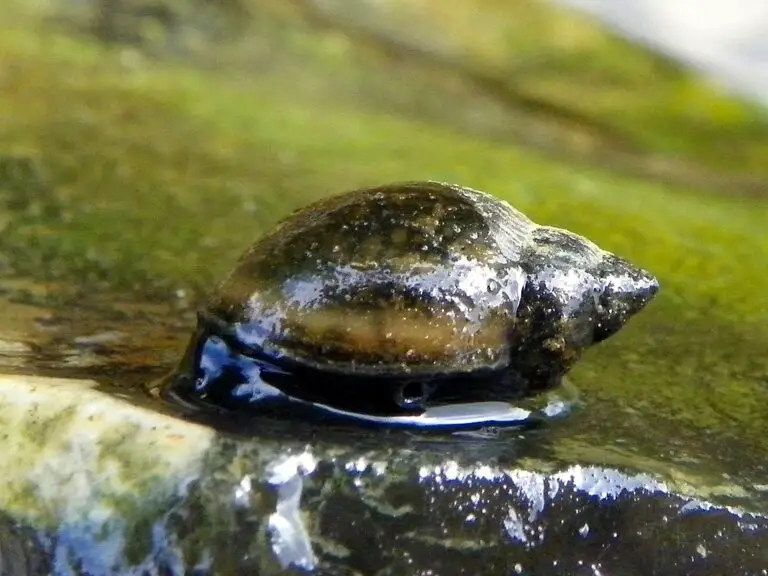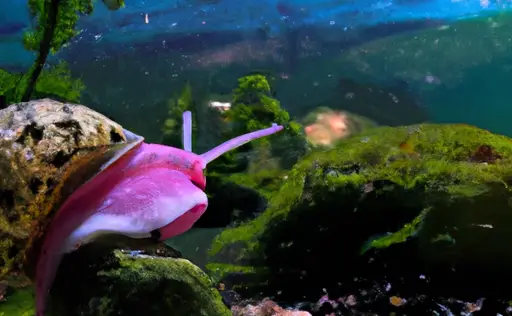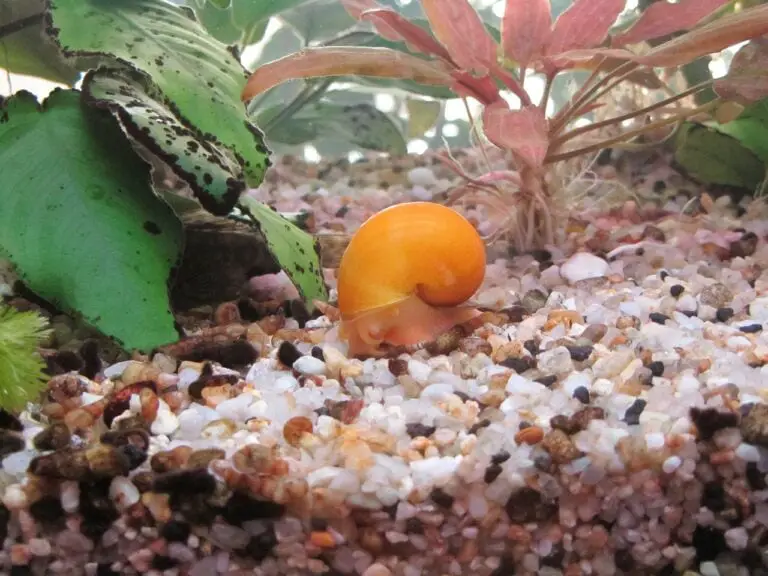Can Snails Breathe Underwater? Discover Their Secrets!
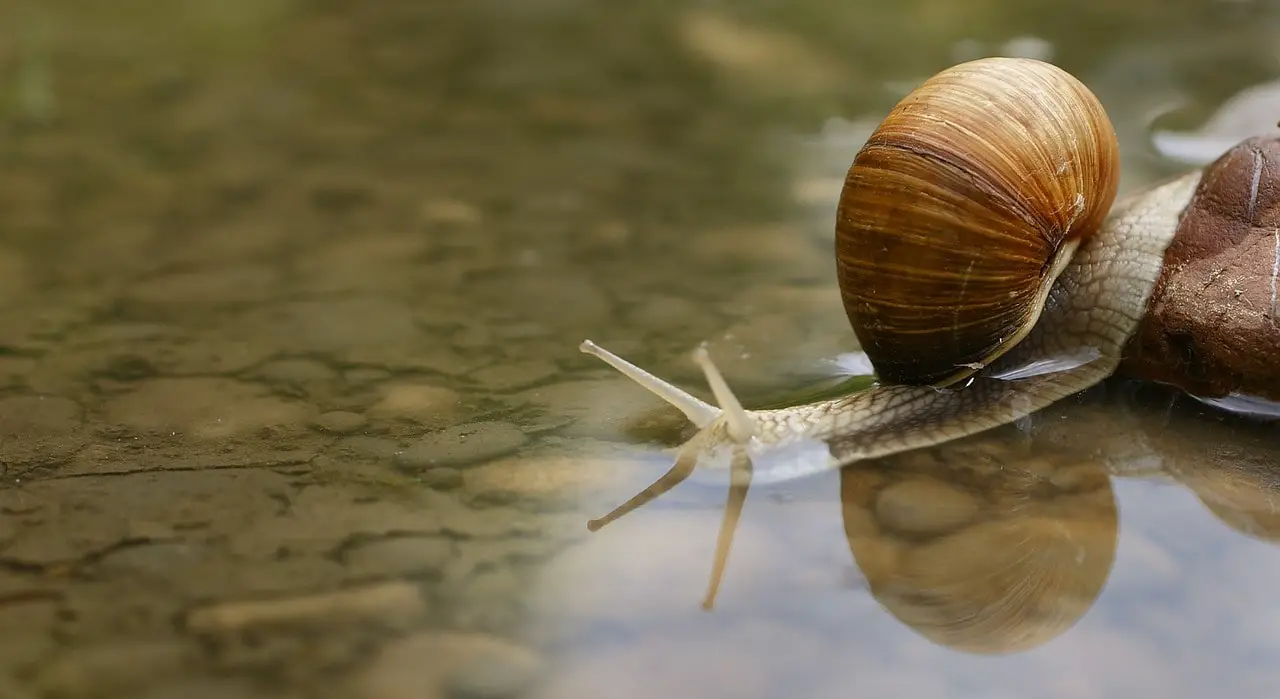
Snails are fascinating creatures that can be found in both land and aquatic environments. But have you ever wondered if they can breathe underwater? In this section, we will explore the secrets behind snail respiration and uncover whether can snails breathe underwater or not.
The question of whether snails can breathe underwater is a common one, and the answer may surprise you. While snails are not known for their aquatic abilities, they do have adaptations that allow them to survive in water for extended periods.
Join us as we delve into the mechanisms of snail respiration and explore their unique adaptations for underwater breathing. Let’s answer the question – Can snails breathe underwater?
Understanding Snail Respiration
Snails have evolved a variety of respiratory mechanisms to obtain the oxygen they need for survival. While most land snails breathe using a lung-like structure, aquatic snails have adapted to extract oxygen from water using specialized organs.
Unlike fish, which extract oxygen from water using gills, snails use a modified version of their mantle cavity, called a pallial lung, to breathe in oxygen from water. This unique structure allows them to extract dissolved oxygen from water, much like a fish’s gills, but with a different mechanism.
Aquatic snails also have a highly vascularized mantle cavity that is rich in blood vessels, allowing for efficient gas exchange. Additionally, some species of aquatic snails have developed a secondary respiratory organ, called a tertiary gill, to further increase their ability to extract oxygen from water.
Types of Aquatic Snails
There are many types of aquatic snails that can breathe underwater thanks to their gills. These include the Apple Snail, Ramshorn Snail, and Trumpet Snail, to name a few. Each of these snails has its own unique characteristics and requirements, and have adapted to their aquatic environment and have developed unique respiratory structures to help them survive. If you’re considering adding snails to your fish tank, you can check out our previous post on the benefits of having snails in a fish tank.
The Importance of Air for Snails
While snails may be able to breathe underwater, access to air is still crucial for their survival. Even aquatic snails need air to breathe.
Snails have specialized respiratory organs called pallial lungs that allow them to extract oxygen from the air. These organs are located inside the mantle cavity, which is basically a pocket of air trapped between the snail’s body and its shell.
The mantle cavity is lined with blood vessels that absorb oxygen from the air and release carbon dioxide. As the snail breathes, it draws air into the mantle cavity through a small opening called the pneumostome.
Without access to air, snails can suffocate and die. This is why it’s important to maintain good water quality in aquatic habitats, as poor air quality can have negative effects on snail populations.
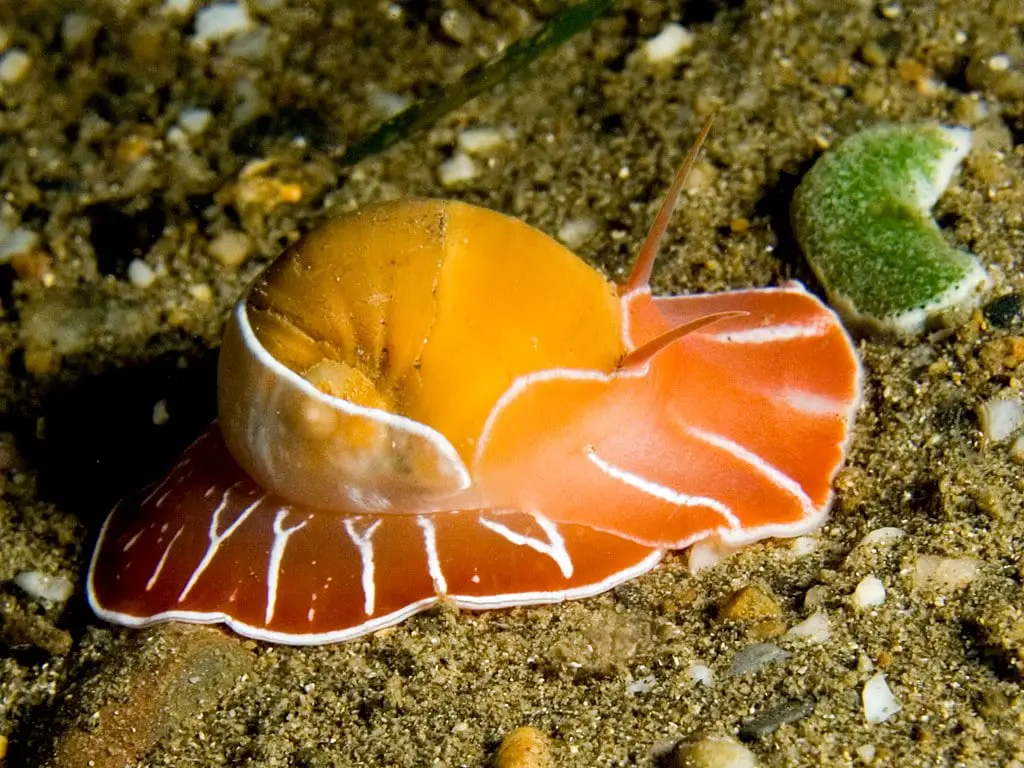
Snail Breathing Mechanisms
Snails have evolved a variety of mechanisms for extracting oxygen from water in order to breathe while submerged. These mechanisms vary depending on the type of aquatic snail, but they all serve the same purpose: to keep the snail alive by supplying it with the necessary oxygen.
One common mechanism among aquatic snails is the use of gills. Just like in fish, snail gills extract oxygen from the water as it flows over them. The extracted oxygen is then transferred to the snail’s bloodstream and transported throughout its body.
Another mechanism used by some aquatic snails is the use of a lung. These snails have a specialized organ that allows them to extract oxygen from the air that is trapped in a pocket of water around them. This pocket of air serves as the snail’s personal air supply, allowing it to breathe even when submerged.
Snail Breathing Structures
In order to utilize these breathing mechanisms, aquatic snails have developed specialized structures to aid in oxygen extraction. These structures include highly vascularized gills and lungs, as well as the presence of cilia in some species.
The gills of aquatic snails are typically located on the sides of the animal’s body. These gills consist of thin, finger-like projections that are covered in blood vessels. As water flows over the gills, oxygen is extracted and transported into the bloodstream.
In snails that use a lung for breathing, the lung is typically located near the front of the animal’s body. The lung is filled with air that the snail has trapped and can use as a source of oxygen.
The Role of Cilia
Some aquatic snails have an additional breathing mechanism in the form of cilia. These hair-like structures line the inside of the snail’s respiratory organ and help to move water over the gills, increasing the snail’s oxygen intake.
For example, some freshwater snails have a specialized respiratory chamber that is lined with cilia. These cilia create a current that draws water over the gills, allowing the snail to extract more oxygen from the water.
Overall, aquatic snails have a variety of mechanisms and structures that allow them to breathe underwater. The specific mechanisms used vary depending on the type of snail, but they all serve the same purpose of supplying the snail with the oxygen it needs to survive.
Adaptations for Underwater Breathing
Snails have developed several adaptations that allow them to breathe underwater and survive in aquatic environments. These adaptations include specialized structures and behaviors that maximize their ability to extract oxygen from water.
One of the key adaptations of aquatic snails is their gills. These respiratory organs are located in the mantle cavity and are used to extract oxygen from water. The gills are highly vascularized, meaning they are rich in blood vessels that facilitate the exchange of gases between the snail’s body and the surrounding water.
Another adaptation of aquatic snails is their preference for shallow waters. By inhabiting shallow waters, snails are able to remain closer to the surface and access pockets of air more easily. This allows them to obtain the oxygen they need to supplement their underwater respiration.
| Snail Adaptation | Description |
|---|---|
| Mantle cavity | Contains gills that extract oxygen from water |
| Shallow waters | Allows access to pockets of air for supplemental oxygen |
| Operculum | Aids in regulating gas exchange in the mantle cavity |
Some aquatic snails also have an operculum. This is a plate-like structure attached to the foot of the snail that can be used to seal the opening of the mantle cavity. The operculum helps to regulate gas exchange, ensuring that the snail takes in oxygen and expels carbon dioxide efficiently.
Overall, snails have developed a range of specialized adaptations that allow them to thrive in aquatic environments. Their ability to breathe underwater and access supplemental oxygen in shallow waters has allowed them to successfully colonize freshwater and marine ecosystems.
How Do Snails Breathe Underwater?
Snails have developed a unique set of mechanisms that allow them to breathe underwater. This process involves the extraction of oxygen from water through specialized respiratory organs.
When a snail is submerged, it relies on its gills or lungs to extract oxygen from the water. These respiratory organs are located in the mantle cavity of the snail and are filled with tiny blood vessels, known as capillaries.
As water flows over the respiratory organs, oxygen diffuses across the walls of the capillaries and into the bloodstream. At the same time, carbon dioxide is released from the bloodstream and into the water, where it is carried away by the surrounding currents.
It is important to note that snails must also have access to air in order to survive. While they are able to extract oxygen from water, they still require air to breathe. Snails have adapted to this need by developing specialized structures that allow them to take in air while underwater.
These structures, known as pneumostomes, are small openings located on the surface of the snail’s body. They allow the snail to access air without leaving the water entirely. The snail can simply float to the surface, exchange gases through the pneumostomes, and then return to the water to continue breathing.
This unique adaptation allows snails to survive in a wide range of aquatic environments, from shallow streams to deep ocean waters.
In summary, snails are able to breathe underwater by extracting oxygen through their respiratory organs and accessing air through specialized structures called pneumostomes. This remarkable adaptation enables them to thrive in a variety of aquatic environments.
Duration of Underwater Respiration
So, how long can snails stay underwater? The answer varies depending on the species and environmental conditions. Some snails can survive for several days without access to air, while others may drown within a few hours.
The duration of underwater respiration depends on a variety of factors, including the snail’s size and metabolic rate. Generally, larger snails have a higher metabolic rate and require more oxygen, which means they may need to surface more frequently to breathe. Additionally, water temperature can impact a snail’s respiration rate, with colder water resulting in slower metabolism and longer periods of underwater respiration.
However, it’s important to note that while snails can survive underwater for extended periods, they still need access to air. Without air, their respiratory organs can become damaged, and they may eventually drown.
So, even though snails can breathe underwater, they still require air to survive. Their unique adaptations for underwater respiration allow them to thrive in aquatic environments, but it’s crucial to maintain water quality and provide access to air to ensure their survival.
Snails and Air Quality
As we discussed in the previous sections, snails need access to air even when they live in aquatic environments. However, the quality of the air can greatly impact their ability to breathe underwater.
Snails have a specialized respiratory organ called a mantle cavity, which is located near their anus and contains gills. The gills extract oxygen from the water, but if the water is contaminated with pollutants or low in oxygen, the snail may not be able to extract enough oxygen to survive.
Poor air quality can also impact snail behavior and overall health. For example, if the water is polluted, snails may avoid certain areas or even stop feeding, which can lead to malnutrition and weakened immune systems.
It is important to maintain good water quality in aquatic environments to ensure the health and survival of snail populations. This can be achieved through proper waste disposal, reducing the use of harmful chemicals, and promoting the growth of oxygen-producing aquatic plants.
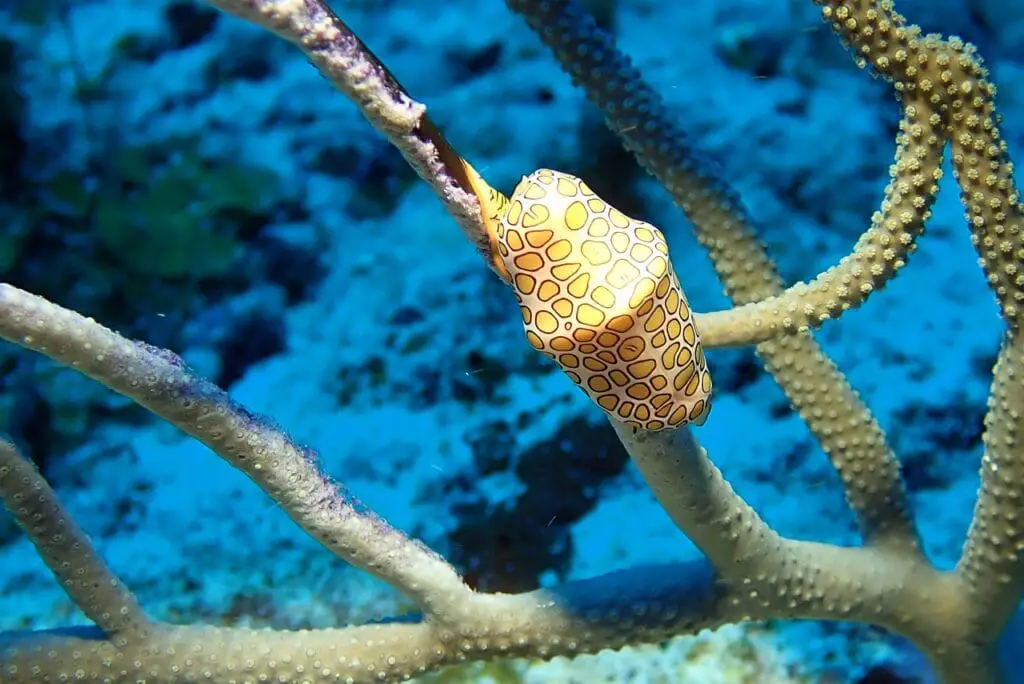
Environmental Factors Affecting Snail Respiration
Snails have adapted to live in a variety of aquatic environments and are capable of breathing underwater. However, their ability to do so can be affected by a range of environmental factors.
| Factor | Impact on Snail Respiration |
|---|---|
| Temperature | As with most animals, temperature plays a critical role in snail respiration. Lower temperatures can slow down their metabolism and respiratory rate, making it harder for them to extract sufficient oxygen from water. |
| Water quality | Snails require access to high-quality water to breathe properly. Poor water quality, such as water that is polluted or low in oxygen, can impair the ability of snails to breathe and even cause long-term damage to their respiratory organs. |
| Acidification | Acidic water can reduce the concentration of oxygen in the water, making it harder for snails to extract sufficient oxygen from it. This can lead to a reduction in their respiration rate and overall growth and survival. |
Other factors, such as turbidity and salinity, can also impact snail respiration. It is important to monitor and maintain the water quality in aquatic environments where snails are present to ensure their continued health and survival.
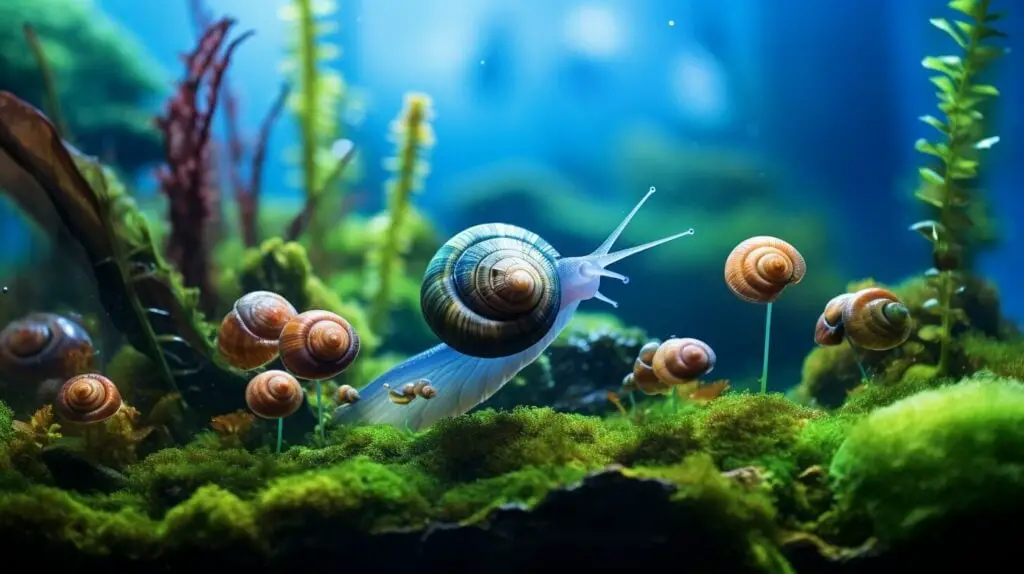
Frequently Asked Questions about Snail Respiration
Have some questions about how snails breathe underwater and their adaptations for aquatic environments? Check out our comprehensive FAQ below for answers!
Can snails breathe underwater?
Yes, snails can breathe underwater! They have adapted to extract oxygen from water using specialized respiratory organs and other adaptations.
Why do snails need air if they can breathe underwater?
While snails can extract oxygen from water, they still require access to air. This is because they need to expel carbon dioxide, which is a waste product of respiration. In addition, snails may not be able to extract enough oxygen from water in certain conditions, such as when the water is stagnant or low in oxygen.
How do aquatic snails breathe underwater?
Aquatic snails breathe underwater by extracting oxygen from the water using specialized respiratory organs called gills. These gills are adapted to extract oxygen from water and expel carbon dioxide.
What are some adaptations that snails have developed for breathing underwater?
Snails have developed a variety of adaptations for breathing underwater, including gills for extracting oxygen from water, a modified mantle cavity for efficient gas exchange, and the ability to close their shell to retain moisture and prevent desiccation.
How long can snails stay underwater?
The amount of time a snail can stay underwater depends on various factors, such as the species of snail and the quality of the water. Some snails can survive for several days without access to air, while others may only be able to survive for a few hours.
What environmental factors can impact snail respiration?
Various environmental factors can affect snail respiration, such as temperature, water quality, and the availability of oxygen. Poor water quality can also negatively impact snail populations and their ability to breathe underwater.
Wrapping Up the Wonders of Snail Respiration
It’s clear that snails, whether in water or on land, have some pretty cool ways to breathe. Their adaptability is a neat reminder of how diverse and surprising nature can be. So, next time you see a snail, remember there’s more going on than meets the eye. Thanks for exploring this topic with us, and keep being curious about the small wonders around us.

